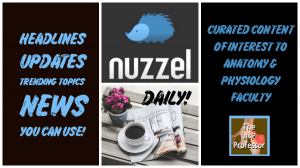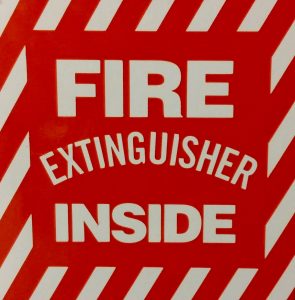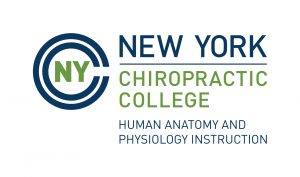The syllabus is an important instructional tool that sets the tone and provides guidance for the entire course. Host Kevin Patton discusses various aspects of a course syllabus in a comprehensive, extended episode featuring classic and fresh segments.
- 0:00:49 | The Syllabus Special
- 0:03:32 | Sponsored by AAA
- 0:04:22 | Weird Word: Syllabus
- 0:06:41 | Do Students Read the Syllabus?
- 0:13:23 | Reading & Raiding the Syllabus
- 0:27:32 | First-Day Activities
- 0:45:32 | Basic Elements of a Syllabus
- 0:58:40 | Sponsored by HAPI
- 0:59:33 | More Things to Put in a Syllabus
- 1:10:59 | Link to Other Resources
- 1:18:58 | Sponsored by HAPS
- 1:19:40 | Professionalism as a Course Goal
- 1:22:41 | Syllabus Warnings
- 1:38:03 | Nuzzel Newsletter
- 1:39:07 | Safety Advice
- 1:59:35 | Pronouns
- 2:02:22 | Long-Long Syllabus
- 2:07:32 | Staying Connected
If you cannot see or activate the audio player click here.
Please take the anonymous survey: theAPprofessor.org/survey
Questions & Feedback: 1-833-LION-DEN (1-833-546-6336)
Follow The A&P Professor on Twitter, Facebook, Blogger, Nuzzel, Tumblr, or Instagram!
Education is not preparation for life; education is life itself. (John Dewey)
Weird Word: Syllabus
2.5 minutes
This segment is adapted from a segment that first appeared in Understanding How We Learn, A Chat with Yana Weinstein & Megan Sumeracki | Episode 27.
Which is correct: syllabuses or syllabi? The answer may surprise you! Nevertheless, now's a good time to think about tweaking your course documents for the fall semester.

Sponsored by AAA
1 minute
A searchable transcript for this episode, as well as the captioned audiogram of this episode, are sponsored by the American Association for Anatomy (AAA) at anatomy.org.
Don't forget—HAPS members get a deep discount on AAA membership!
The Anatomy Now Weekly issue with accessibility resources: my-ap.us/30tnHHH
Do Students Read the Syllabus?
6.5 minutes
This segment is adapted from a segment that was first aired in The Syllabus Episode | Bonus | Episode 24.
Do students read the syllabus? Maybe half? It's the other half who drive us nuts. Wait! do we always read the directions before asking questions?
What is a syllabus? It can be different things, right? Why do administrators seem to love the syllabus so much?
- Please share the first tweet in my Twitter feed: @theAPprofessor.org
- That "empathy thing" I'm always harping on: Caring for Students Helps Them Succeed
Reading & Raiding the Syllabus
14 minutes
This segment is adapted from a segment that was first aired in The Syllabus Episode | Bonus | Episode 24.
Some general considerations when designing a syllabus include make sure that students can both read the syllabus through, and raid the syllabus for key information when they need it. The key is simplicity and logic in syllabus design.
- READ and RAID your textbook (a link for students; explains the "read & raid principle" as applied to textbooks
- Storytelling is the Heart of Teaching A&P (the episode where I explain storytelling as a teaching technique)
- Utilize Clear Language (my take on simpler language to reach students)
- Temple Grandin, animal science professor and autism spokesperson; someone who "gets it" that we have to try to put our head inside their heads
- Recommended book: Animals in Translation
- Recommended video: Temple Grandin (the film starring Claire Danes)
First-Day Activities
18 minutes
This segment is adapted from a segment that was first aired in The Syllabus Episode | Bonus | Episode 24.
Is it just "here's the syllabus; see ya next class"—or is it an engaged look at important syllabus elements? The first day of class is key to starting things off on a good foot. What I learned from Krista, Michael, and Richard—and my own sideways twist on those first steps. What about a syllabus quiz? Is that a good or bad idea?
- Krista Rompolski PhD @KristaRompolski
- Recommended teacher gear: Leather index card wallet or Index card wallet
- Engaging Students on the First Day of Class (my first-day syllabus activity; adapted from Michael Glasgow & Richard Faircloth; click through to download copies of my handouts)
- First Impressions: Activities for the First Day of Class (article from Faculty Focus)
- Why be honest? (about academic integrity)
- Student Understanding
- This is what I use for my Pre-A&P course, a self-paced onine refresher course
- My web-enhanced on-campus courses use a similar list
- The online quiz turns each item into a multichoice "I understand" or "I do not understand" test item
- A perfect score unlocks the next item in the LMS, thus making this a necessary gateway to access course activities
- Test Zero
- Reviews prior content and syllabus contents
- Start A&P 2 with a Final Exam (explains my Test Zero for A&P 2)
- Teaching For Long-Term Learning (episode in which I explain my Test Zero approach)

Basic Elements of a Syllabus
13 minutes
This segment is adapted from a segment that was first aired in The Syllabus Episode | Bonus | Episode 24.
What exactly goes into a syllabus? Who decides? What are the essentials? This isn't comprehensive, but it gets us started.
- How to Write a Syllabus (a great online guide from Cult of Pedagogy)
- HAPS Learning Outcomes - Human Anatomy and Physiology Society (HAPS membership is required to access them)
- Anatomy Core Syllabi (from the Anatomical Society; different flavors [undergrad med, nursing, pharmacy] membership not required to access them)
- LifeSciTRC Syllabus Resources (free samples of A&P syllabi & related resources)

Sponsored by HAPI Online Graduate Program
2.5 minutes
The Master of Science in Human Anatomy & Physiology Instruction—the MS-HAPI—is a graduate program for A&P teachers, especially for those who already have a graduate/professional degree. A combination of science courses (enough to qualify you to teach at the college level) and courses in contemporary instructional practice, this program helps you be your best in both on-campus and remote teaching. Kevin Patton is a faculty member in this program. Check it out!
More Things to Put in a Syllabus
11.5 minutes
This segment is adapted from a segment that was first aired in The Syllabus Episode | Bonus | Episode 24.
Frank O'Neill recommends video walk-throughs, which have the added benefit of letting students know that you really do care about them. Consider also a table contents, abstract/summary, and/or index if the syllabus is long. How about a disclaimer, some playful tidbits, and links to external resources. And make sure your supervisors know what's in your syllabus!
- Frank O'Neill @growgraymatter
- 7 Ways Video Can Enhance the Student Experience (video of Frank's live presentation, in which he addresses how to use a video walk-through of an A&P syllabus to give students a good first impression)
- Cumulative Testing Makes Learning Last (episode in which I discuss brief video walkthrough; click through for a link to more resources)
- Professors Are from Mars®, Students Are from Snickers®: How to Write and Deliver Humor in the Classroom and in Professional Presentations (recommended book)
- Playful & Serious Is the Perfect Combo for A&P (previous episode explaining the value of playfulness in the A&P course)
Link to Other Resources
8 minutes
This segment is adapted from a segment that was first aired in The Syllabus Episode | Bonus | Episode 24.
Consider putting hyperlinks or URLs in the syllabus to take students to other resources. Consider linking to a FAQ page, wher you explain your rationals for doing things the way that you do them in your course.
- Additional links you may find useful
- Syllabus Resources for A&P (from the TAPP blog)
- Help Your A&P Students Get Off to a Good Start (from the TAPP blog)
- Academic integrity in A&P (from the TAPP blog)
- Search medical errors Communication, Clarity, & Medical Errors | Episode 55 (is spelling important?)
- Some links that your students may find helpful:
- The A&P Student (Kevin's blog for A&P students; rich source of advice you can give your students; theAPstudent.org)
- Lion Den (Kevin's website with all kinds of study skills tips and resources for A&P students; LionDen.com)
- Medical Science Navigator (Margaret Thompson Reece’s website for helping A&P students; she offers mini-courses!)
- Getting a Good Start in your Anatomy & Physiology Course
- Why be honest? (about academic integrity)
- Why deadlines are important
- Is spelling important?
- Help significant others help you (getting busy students—especially returning learners—off to a great start)
- Get Your Head in the Game - 5 Tips for Success in Learning (metacognition for A&P students)
- 9 Proven Tricks for Reducing Test Anxiety (for A&P students)
Sponsored by HAPS
1 minute
The Human Anatomy & Physiology Society (HAPS) is a sponsor of this podcast. You can help appreciate their support by clicking the link below and checking out the many resources and benefits found there. Watch for virtual town hall meetings and upcoming regional meetings!
Professionalism as a Course Goal
3 minutes
This segment is adapted from the featured segment in Communication, Clarity, & Medical Errors | Episode 55.
Sometimes a student frets about the A&P course being "not a spelling course" or "not an English course" — but professional communication is an essential skill for health professionals. Why not add this statement to our syllabus and/or other course documents?
Here's an example of an item from my syllabus learning outcomes and objectives from my Pre-A&P course related to professionalism:
- work independently in a self-paced online science course
- succeed in taking online tests and exams
- communicate in professional scientific language, including correct spelling and usage of terminology
- exhibit ethical professional behavior, including academic integrity
Useful links:
- The Syllabus Episode | Bonus | Episode 24
- Promoting Academic Integrity in Our Course | Episode 25
- Modeling Professional Integrity | Episode 26

Syllabus Warnings
15.5 minutes
This segment is adapted from a segment that was first published in Warnings & Safety Tips in the A&P Syllabus | Episode 57.
Kevin usually has a Warnings! page in his syllabus or other course documents. It contains three warnings about, and rationale explaining, some important things a student should know before continuing in the A&P course. There is shouting involved.
- The Syllabus Episode | Bonus | Episode 24
- Help significant others help YOU (a brief blog post for students; link to this from your course webpage, learning management system, and/or syllabus) my-ap.us/rgNZ27
- Supporting Returning Learners | Episode 9
- Bonus handout!
- Syllabus Warnings
- Available only in the free podcast app (the TAPP APP)
- For iOS devices: my-ap.us/TAPPiOS
- For Android devices: my-ap.us/TAPPandroid

Nuzzel Newsletter
1 minute
In the Nuzzel Newsletter for The A&P Professor, host Kevin Patton selects daily headlines that may be of interest to anatomy and/or physiology faculty. This Nuzzel newsletter is published five days a week (more or less).
To check out the archives of past Nuzzels, or to subscribe, go to: nuzzel.com/theAPprofessor

Safety Advice
20.5 minutes
This segment is adapted from a segment that was first published in Warnings & Safety Tips in the A&P Syllabus | Episode 57.
We're held responsible (at least in part) for the safety of everyone in our classroom. How best to prepare for and facilitate safety?
- Teaching For Long Term Learning | Episode 7 (includes discussion of Test Zero)
- Active Shooter Booklet (free PDF from Department of Homeland Security) my-ap.us/DHSbooklet
- Bonus handout!
- Safety First!
- Available only in the free podcast app (the TAPP APP)
- For iOS devices: my-ap.us/TAPPiOS
- For Android devices: my-ap.us/TAPPandroid

Personal Pronouns
2.5 minutes
Introducing our own preferred gender pronouns opens the door for including the personal pronoun preference of student (should that be important to them) and can help connect with our students in ways that improve the learning environment.
- Gender Pronouns and Teaching my-ap.us/31gbzst
- The Problem With Pronouns my-ap.us/2CZjrU0
Long-Long Syllabus
5 minutes
A syllabus could become massive. As with the massiveness of an elephant, the large size may be "just right." But maybe not. There are ways to reduce the size of a syllabus without losing any important content. And there ways to make a large syllabus easier to read and easier to raid. This segment revisits some ideas brought up in earlier parts of this episode.
- Yes, Your Syllabus Is Way Too Long (Chronicle of Higher Education article mentioned in this segment) my-ap.us/33mhP4x
- The Elephant Episode | Episode 31 (about elephants, not syllabi)
If the hyperlinks here are not active, go to TAPPradio.org to find the episode page.
More details at the episode page.
Transcript available in the transcript box.
Listen to any episode on your Alexa device.
Need help accessing resources locked behind a paywall? Check out this advice from Episode 32 to get what you need! https://youtu.be/JU_l76JGwVw?t=440
Click here to listen to this episode—or access the detailed notes and transcript.




No comments:
Post a Comment